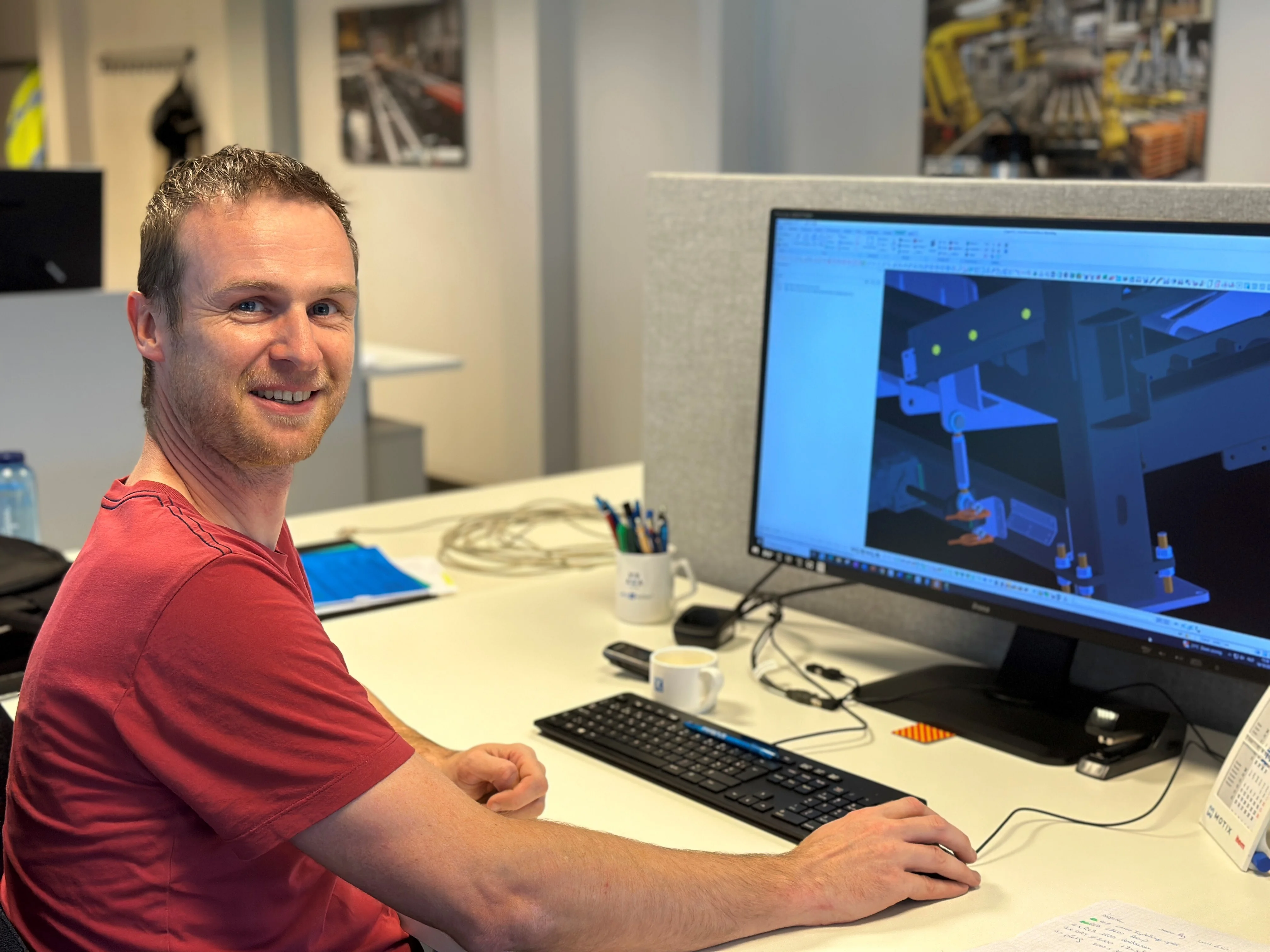“A recent project at Harinck involved a new system for buffering and in- and outbound transport of increasingly large and heavy exterior doors. The heart of the installation is a pallet crane developed specifically for the dimensions and weights of these doors. The telescopic system can safely handle both narrow and wide doors and is designed for heavy loads.
Implementation took place in two phases to minimise production downtime. During the Christmas shutdown, conveyors and turntables were widened, the lift was modified and a more powerful PLC installed. The new warehouse was then constructed, and during the summer break the pallet crane was connected to the existing line.
After assembly, the doors pass through the packaging line: a box, bubble wrap, labels and stretch film provide full protection. They are then transported via lifts and conveyors to the racking system. There are several in- and outbound options, including for manually packed or rejected doors, which are safely re-introduced into the flow. Barcodes with length, width and weight determine the correct position every time. At night, orders are automatically prepared per truckload.
Safety is a key focus: there is no access to the warehouse while the system is running, but specific doors can always be safely requested via the control panel. The installation is modular and programmable, allowing it to adapt to future door sizes or production volumes.”
- by Wesley Poissonnier
project engineer

